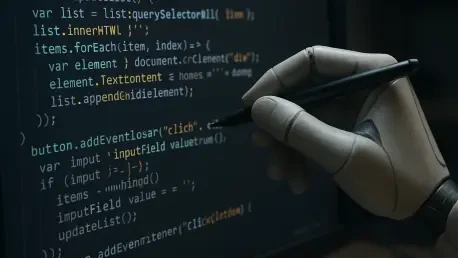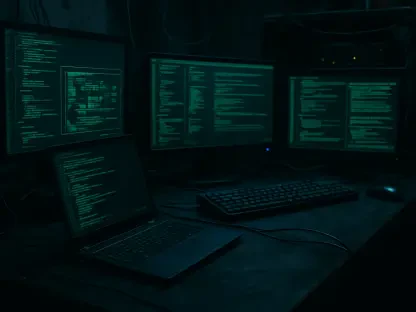In the bustling tech landscape of 2025, a staggering statistic emerges: nearly 60% of developers report that AI coding tools, once touted as the ultimate productivity boosters, are slowing them down with errors and inefficiencies, sparking heated debates in coding communities worldwide. This unexpected roadblock raises a pressing question: Are these tools a fleeting misstep in the march of progress, or do they hold the key to a revolutionary future in software development? This issue looms large as the industry grapples with the gap between hype and reality, setting the stage for a deeper exploration of AI’s rocky integration into the coder’s toolkit.
The significance of this issue extends far beyond the confines of tech forums. AI in coding isn’t just a niche problem for developers; it’s a cornerstone of the digital economy that powers everything from smartphone apps to critical infrastructure. With software underpinning nearly every aspect of modern life, the stumbles of AI tools today could ripple into delays or flaws in tomorrow’s innovations. Understanding and addressing these challenges now is crucial, as the stakes involve not only individual productivity but also the pace of global technological advancement.
Why AI Coding Tools Frustrate Developers
Despite the fanfare surrounding AI-driven coding assistants, many developers find themselves bogged down by tools that promise efficiency but deliver frustration. A recent survey by a leading tech research firm revealed that 62% of programmers spend more time debugging AI-generated code than writing it themselves. These tools often produce inaccurate outputs or irrelevant suggestions, forcing coders to sift through a mess of errors rather than focusing on creative problem-solving.
This disconnect stems largely from a mismatch between expectation and capability. Marketed as intelligent partners, many AI systems are, in essence, sophisticated pattern-matchers that lack a nuanced understanding of complex coding contexts. The result is a tool that can churn out basic scripts but falters when faced with intricate, project-specific challenges, leaving developers to question their reliability in high-stakes environments.
The frustration isn’t just anecdotal; it’s measurable in lost hours and stalled projects. For instance, a mid-sized software firm reported a 15% drop in delivery timelines after adopting an AI coding assistant, citing constant rework as the culprit. This paints a sobering picture of an industry caught between the allure of automation and the reality of unpolished technology, raising critical questions about immediate usability.
The Broader Impact of AI in Coding
The implications of AI’s struggles in coding ripple far beyond individual developers’ desks. Software is the backbone of modern society, driving everything from healthcare systems to financial markets. When AI tools fail to streamline development, the delays and errors can cascade into broader inefficiencies, potentially affecting the rollout of critical updates or new applications that millions rely on daily.
Moreover, the integration of AI into coding reflects a larger trend in workforce transformation. If these tools can’t deliver on their promise, companies may hesitate to invest in automation, slowing the shift toward tech-driven productivity that many industries depend on. This hesitation could widen the gap between tech leaders and laggards, with economic consequences for regions slower to adapt.
Consider the example of a major banking app delayed by buggy AI-generated code; such a setback doesn’t just frustrate developers—it erodes consumer trust and impacts market share. Thus, the stakes are high, touching on issues of innovation, competitiveness, and even public safety in a world increasingly reliant on flawless digital systems.
Unpacking AI’s Challenges and Untapped Potential
At the heart of AI’s current woes lies a pervasive issue of overhype. Often branded as a cure-all, these tools are more accurately described as advanced data analytics systems, not true intelligence. This misnaming fuels unrealistic expectations, leading to disillusionment when a tool can’t grasp the subtleties of a developer’s intent, as seen in community forums flooded with complaints about irrelevant code snippets.
Productivity setbacks compound the problem, with AI frequently generating “hallucinations”—outputs that seem plausible but are fundamentally flawed. Developer feedback highlights a grim reality: fixing these errors often takes longer than coding from scratch. A study by a software analytics group found that 48% of coders using AI tools reported a net loss in efficiency, underscoring the urgent need for refinement in these systems.
Yet, beneath the surface struggles lies immense potential. Historically, coding has evolved through leaps in abstraction, from raw machine language to high-level languages like Java. AI could represent the next frontier, automating repetitive tasks and freeing developers for strategic thinking. While resource constraints—such as the enormous energy demands of training models, estimated at millions of kilowatt-hours annually—pose temporary barriers, past innovations suggest these hurdles will diminish with time and technological advancement.
Insights from the Trenches: Developers and Experts Weigh In
Voices from the coding community paint a vivid picture of AI’s mixed reception. A prominent tech executive from a leading code repository platform recently predicted that within a decade, AI could handle nearly all routine coding tasks, envisioning a future where human coders focus solely on design and intent. This bold vision, however, clashes with ground-level realities shared by many programmers who describe current tools as more hindrance than help.
Developers on social platforms often vent about specific grievances, such as AI suggesting outdated libraries or failing to adapt to custom workflows. One software engineer quipped, echoing an old programming jest, that coders might never write plain English well, even if AI perfects natural language coding. This humor underscores a persistent tension between human quirks and machine capabilities, grounding the debate in relatable terms.
Historical perspectives add further depth, recalling pioneers like Rear Admiral Grace Hopper, who in the 1950s championed accessible programming with languages like COBOL. Her push against resistance to high-level languages mirrors today’s skepticism toward AI, suggesting that perseverance and vision can eventually turn doubters into adopters. These diverse insights weave a tapestry of cautious hope amid present-day discontent.
Charting the Path Ahead for AI in Coding
Navigating AI’s future in software development demands practical, actionable strategies. First, stakeholders must temper expectations by framing AI as a specialized assistant rather than a universal solution. Focusing on narrow applications, such as optimizing existing code, can build trust and demonstrate tangible value without overpromising miraculous results.
Investment in infrastructure is equally critical to address resource bottlenecks. Developing energy-efficient models and scalable hardware, much like the industry did during the rapid advancements driven by Moore’s Law, could alleviate the computational strain of AI training. Governments and tech giants alike should prioritize funding for such innovations to ensure sustainable progress over the coming years.
Finally, a user-centric approach must guide tool design, ensuring interfaces and outputs align with real developer needs rather than marketing hype. Simultaneously, education and training should shift emphasis toward strategic planning and system design, preparing coders for a landscape where AI handles the mundane. These steps, taken collectively, offer a roadmap to transform AI from a stumbling block into a stepping stone for coding’s next era.
As the dust settles on early attempts to integrate AI into coding, the tech community reflects on a journey marked by both missteps and milestones. Looking back, the initial frustration gave way to focused efforts that reshaped tools for better alignment with developer workflows. The lessons learned underscored the value of patience and precision in harnessing emerging technologies. Moving forward, the industry stands poised to refine AI through collaborative innovation, ensuring it amplifies human creativity rather than impedes it. The next chapter promises a fusion of vision and pragmatism, paving the way for breakthroughs that could redefine software development for generations.









